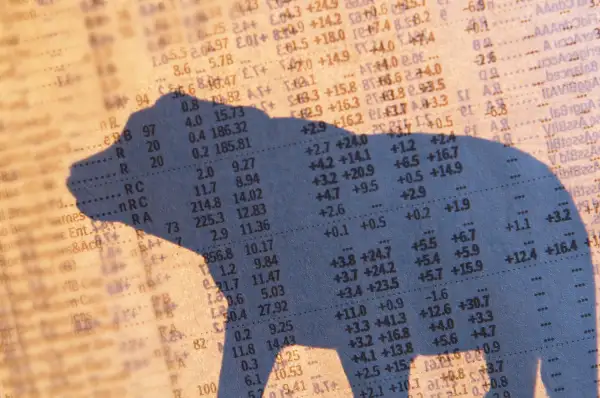The Next 2 Days Will Tell Us If a Bear Market Is Lurking
Money is not a client of any investment adviser featured on this page. The information provided on this page is for educational purposes only and is not intended as investment advice. Money does not offer advisory services.

People don't usually associate jolly old Saint Nick with grisly bear markets. But history says there's a connection.
You see, naughty or nice, Wall Street normally gets a visit from Santa Claus in the waning days of the holiday season. Since 1969, the S&P 500 index of U.S. stocks has averaged gains of 1.4% in the last five trading days of the year plus the first two trading days of the new year, according to the Stock Trader's Almanac.
But "the significance of the 'Santa Claus Rally' is really when it does not occur," notes Jeff Hirsch, editor of the Stock Trader's Almanac.
That's because it's often a harbinger of bad or disappointing markets to come.
Lackluster stock market performance in the holiday season of 1999 and 2007, for instance, foreshadowed epic bear markets in which the S&P 500 lost 9% in 2000 and 37% in 2008. And in three of the other most recent occasions when Santa handed out coal, the stock market pretty much went nowhere. That occurred in 1994, 2005, and 2015, when the S&P 500 sank 0.7% — posting its worst year since the global financial crisis ended in early 2009.
More than five days into the current Santa season, the S&P 500 isn't jolly at all. Following the panic that spread throughout the global markets Monday morning — sparked by a plunge in Chinese stocks — U.S. stocks are now down more than 3%. With a little more than one trading day to go, it would take an epic rebound for Santa to make a comeback on Wall Street this year.
The funny thing is, the December interest rate hike engineered by the Federal Reserve is being cited as the reason why stocks aren't doing so well — or why they may rally soon.
Historically, rising rates have been viewed as a headwind to the markets, as it raises borrowing costs and cuts into corporate profits.
“The big concern this year is if Janet Yellen is the Grinch that could steal the Santa Claus Rally from investors,” noted Robert Johnson, a financial expert and president of The American College of Financial Services.
But Sam Stovall, U.S. equity strategist for Standard & Poor's, has argued that the Fed's decision to finally lift rates in December — after months of endless speculation — lifted "the veil of uncertainty" weighing on the markets.
Stovall concedes, though, that if Santa is a no show by Jan. 5 (the end of the 7-trading-day window), then that old Wall Street adage could kick in: “If Santa Claus should fail to call, bears may come to Broad and Wall.”
This is particularly worrisome as the current bull approaches its seventh birthday in March, when the average lifespan of a bull market is just four years.
